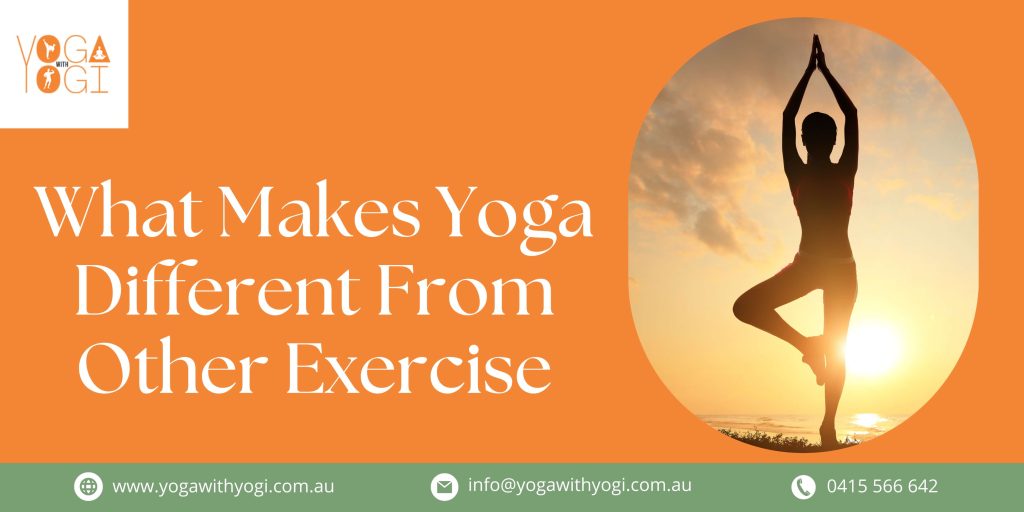Many people seek out yoga as an alternative form of exercise for a variety of reasons, including weight loss, increased flexibility, increased strength, increased heart rate, and relief from stress, anxiety, and other mental/emotional problems. All of these are valid arguments, but what distinguishes yoga from a gymnastics or stretching class? When you join the yoga classes in Sydney, you will get to know that there are plenty of benefits associated with the regular practise of yoga which transcends the physical aspirations.
Yoga schools have significantly diverse perspectives on this. For instance, the importance of Bandhas (physical locking of certain muscles and muscle groups) and breath is greatly emphasised in Ashtanga, an athletic flowing succession of poses. The primary emphasis of the practise is on the Ujjayi breath, a particular style of slow, controlled breathing. In the online yoga classes Australia, you will learn about the controlled and breath-synchronized movements.
Some yoga styles place an emphasis on the spiritual parts of the practise, including chanting, meditation, readings, and affirmations. Other types place an emphasis on the practice’s energetics, with the goal of awakening the Kundalini energy that sits at the base of the spine. Some people will concentrate on purifying their bodies from the inside out by exercising in hot environments and promoting sweating as a means of detoxification and toxin removal.
All yoga styles acknowledge these different facets of the practise, but they distinguish themselves by emphasising particular facets over others.
Yoga differs from other forms of exercise in that it emphasises the unification of the mind, body, and spirit through a wide variety of methods. Yoga brings health and peace to the body as well as the mind, rather than just the body or just the mind, by restoring and maintaining balance within all the many bodily systems.
It’s not necessary to be interested in this union to take a yoga class; yoga has great physical benefits and can help you relax your body and mind. However, what makes yoga special is that it puts the yogi on a path that, if they choose to follow it, can help them find at least a small amount of inner peace and acceptance.
Difference between Exercise and Yoga
Exercise is any type of physical activity or exertion that energizes the body’s muscles and several major organs. The majority of activities also increase blood circulation, which is good for one’s general health. Furthermore, by keeping excess weight off the body, several forms of exercise are beneficial in preventing illnesses or disorders. In contrast, yoga addresses more than just a person’s physical wellness. A discipline with roots in ancient Hindu tradition, it aims to integrate a person’s bodily, spiritual, and mental well-being. In actuality, the word “yoga” roughly translates to “union.” A healthy and balanced physical state is seen as the necessary precondition for achieving a higher state of consciousness by proponents.
Involvement of nervous system
The sympathetic nervous system, which affects digestion, blood vessel contraction, and heart rate, is activated during exercise. Moreover, it works to prevent the parasympathetic nervous system’s physiological effects. As a result, exercising makes you feel exhausted. The parasympathetic nervous system, which is involved in yoga, works to offset the physiological impacts of the sympathetic nervous system. It is in charge of promoting digestive secretions, widening blood vessels, lowering heart rate, and narrowing pupil size. In other words, practising yoga makes you feel relaxed.
Equipment requirement
The types of physical activities that can be performed when exercising are often limited by the need for equipment. Also, it restricts where one can do the exercise(s). Even participating in partner or group activities is necessary for some exercises.
In general, yoga is self-sufficient. This indicates that it can be done without any special tools. There is no essential requirement, not even for a yoga mat. All that is required for someone to do the position is enough room.
Oxygen consumption
Exercise, especially aerobic exercise, causes a rise in oxygen consumption. Yoga places a lot of emphasis on appropriate breathing. Hence, using optimal breathing techniques results in a decrease in oxygen usage.
Caloric consumption
The majority of people normally feel hungry after exercising because most workouts have a moderate to high calorie requirement. Contrarily, yoga resulted in relatively modest calorie consumption, which explains why yogis typically eat less food than exercisers.
Energy conservation
Exercise is a catabolic process, meaning it causes metabolic damage. In other words, it has the ability to degrade the energy. Yoga is anabolic, which means it favours or is characterised by a healthy metabolism. It is hence capable of energy conservation.
Type of movement and toning of muscles
Exercise is a catabolic process, meaning it causes metabolic damage. In other words, it has the ability to degrade energy. Yoga is anabolic, which means it favours or is characterised by a healthy metabolism. It is hence capable of energy conservation. Normal exercise calls for quick, powerful movements. Yoga, on the other hand, typically calls for fluid, slow movements.
Risks of injury
Due to the significant impact that most physical activities have on muscles and ligaments, exercise carries a substantial risk of injury. Yoga positions have little effect on the muscles and ligaments, thus there is a reduced chance of injury.
Health and age restrictions
Those who are in good health exercise frequently since many of the activities are challenging to accomplish when one is ill. In addition, while there are workouts that older people can undertake, the more demanding exercises are often performed by younger people. Whether a person is healthy or not, they can practise yoga. When doing the majority of yoga positions, there is no upper age limit.





